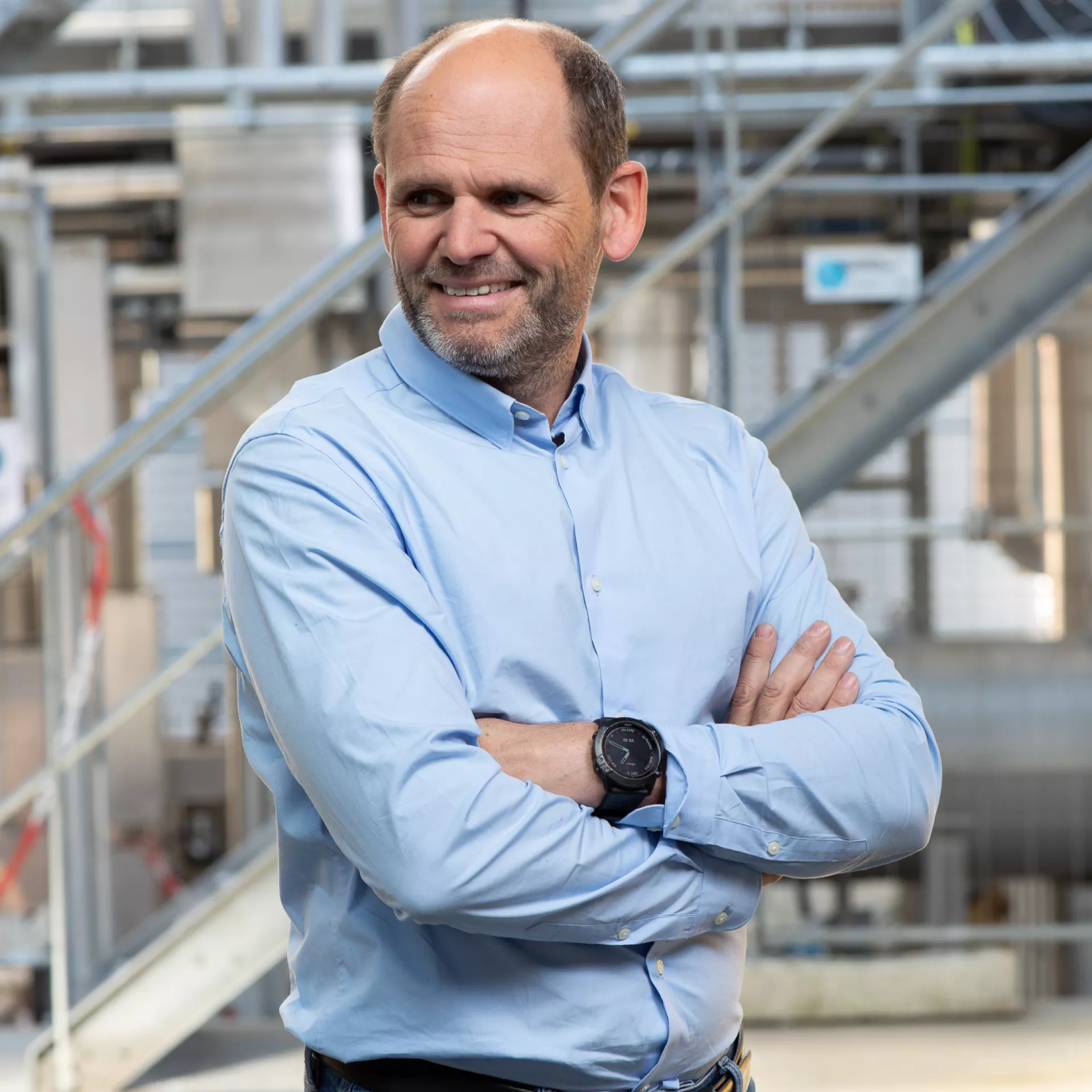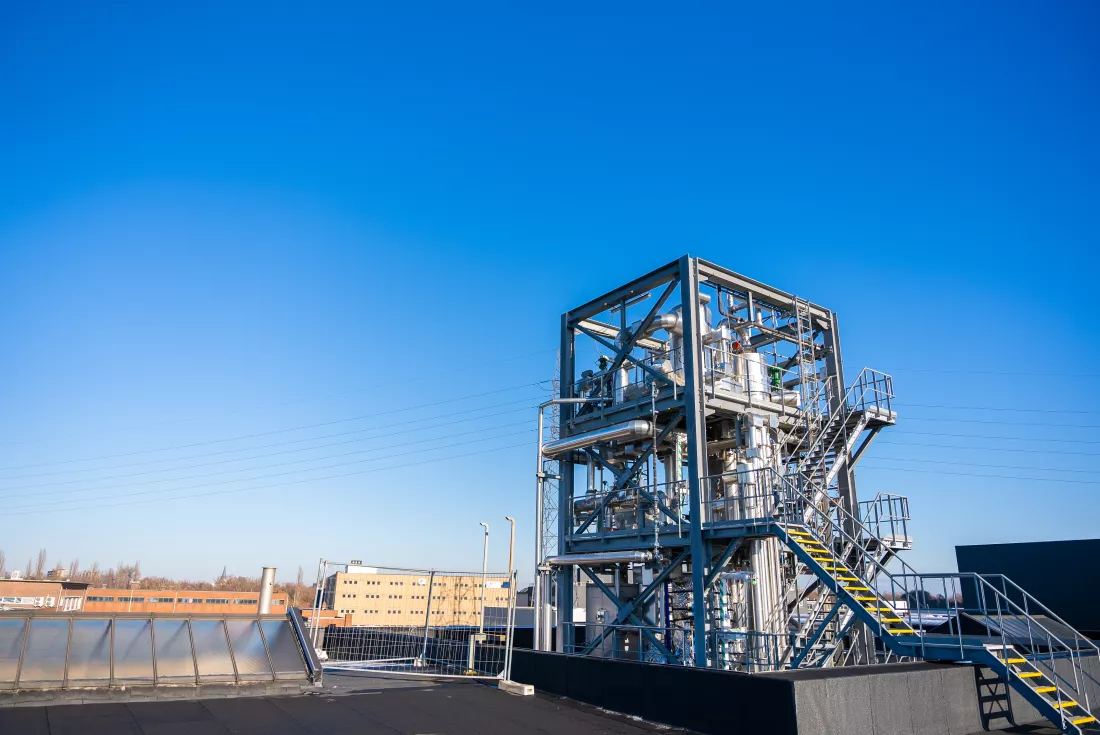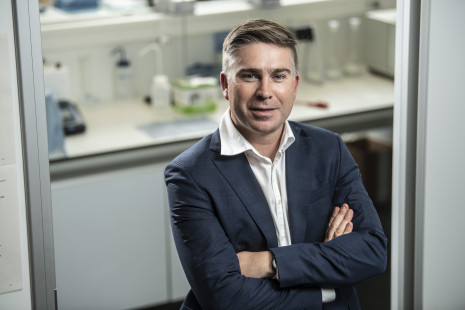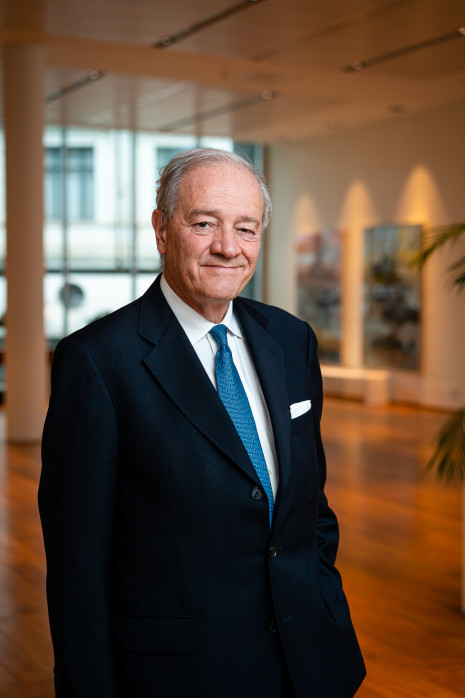Wouter Ducheyne
Co-founder Qpinch
“Antwerp is an ideal location for advancing innovation in chemistry"

Qpinch recovers waste heat from industrial processes and reuses it with hyper-efficiency. By capturing and converting heat into steam, installations can achieve energy savings of 10-20 % and reduce CO2 emissions. Qpinch's physicochemical-based industrial heat recovery technology is revolutionary, commercially viable, and scalable. It has the potential to play a significant role in the sustainability efforts of CO2-emitting companies. Qpinch co-founder, Wouter Ducheyne, explains: "Qpinch has developed a platform technology that can be implemented in various companies, especially large industrial companies in the petrochemicals sector, which can significantly enhance their sustainability."
Qpinch is more than just a quick win for industrial companies that will continue to rely on fossil fuels for decades; the technology can immediately contribute to climate goals. Wouter Ducheyne elaborates: "Qpinch can result in savings of 10-20 % in the amount of fossil fuel burned by an industrial installation. It's important to note that while renewable technologies are gaining momentum, they are not available around-the-clock, all-year-round. Nuclear energy and fossil fuels will therefore remain part of the energy mix for decades to come. Qpinch aims to make all energy consumption as clean as possible on a continuous basis. Hardware, such as the Qpinch Heat Transformer, will make a significant difference in terms of environmental impact. I emphasise 'hardware' because some continue to believe that software alone can reduce the melting of the North Pole."
Christian Heeren and Wouter Ducheyne, both co-founders of Qpinch in 2012, chose a location in the Antwerp port area for their site. "Our test installation in 2012 was initially an empty warehouse, and we needed a place to build a demonstration unit. Constructing a chemical installation can only be done in industrial areas, so we approached the Port Authority. They own the land, and the building is now ours. When you lease land from the port, it is designated for industrial use, a designation that means you are not restricted in your R&D activities. While you need to apply for environmental and planning permits and comply with all legal requirements, you have carte blanche in terms of R&D. We work with phosphoric acid, which is not harmful to the environment. But you still need to use the right materials."
This applies to several companies that have found the Antwerp port area an ideal location for their activities or research and development efforts. "This is the case for the incubator BlueChem, although they are not located directly in the port area”, says Wouter Ducheyne. “This wasn’t an option for Qpinch, as we couldn't build our demonstration setup in a laboratory. Our installation is 14 metres high. However, the NextGen District now seems very suitable for developing hardware chemistry. Many of our neighbours in Antwerp are also involved in innovation in sustainable chemistry, which encourages networking and collaboration. Is Antwerp becoming a hub for innovative chemistry climate technology? We can see that the city and port certainly have ambitious plans, including promoting its own start-ups and companies. However, there is still a need for focus and coherence to avoid diluting resources too much. However, our network here is particularly strong."

Qpinch initially built the installation on-site, but the plan is to assemble installations in production halls anywhere in the world. “On-site is called 'stick built.' We did it this way for two customers, but the idea is to build modularly and then install pre-assembled hardware. It's more plug-and-play, as modular construction allows us to build in a suitable location anywhere in the world. This is much more convenient than building on-site in all weather conditions. The goal is also to make the installations increasingly more powerful. Our largest model currently has a capacity of 10 megawatts. If more power is needed, you simply place the units next to each other in parallel."
Qpinch also operates in Carbon Capture & Storage (CCS). Wouter Ducheyne sees it as a logical extension of heat recovery and a crucial part of the energy transition. "CCS, or carbon capture and storage, is a thermal process, which means you need heat to capture CO2. Qpinch has the ideal technology to efficiently recover this heat. We can make capturing CO2 20-30% more energy-efficient. We can also extract the heat used for capturing from an existing factory, making the process entirely CO2-neutral. Qpinch makes the entire process much more sustainable, efficient, and cost-effective."
The sustainable chemistry ecosystem in Antwerp serves as a lever for Qpinch. Among the various awards the young company has won, one was directly linked to the support from the City of Antwerp. "The most important award we won was the 'Emerging Sustainable Technology Award' from the Royal Society of Chemistry in London in 2015” says Ducheyne. “This marked a breakthrough for our technology with a proof of concept. But we also won an award in our category in the City of Antwerp’s 'Get in The Ring' competition, which led to a global meet-up in Montreal. This was valuable for expanding our network and attracting competent international talent. However, we gained real impact and attention from major companies through the ICIS award from the association of chemical companies, which gave us significant exposure in that sector. Awards like these encourage talented individuals to venture into entrepreneurship in the field of chemistry, even in this capital-intensive industry."
Qpinch has set high goals and aims to capture a substantial portion of the CO2 emissions from the Port of Antwerp-Bruges in the long term. Ducheyne concludes, "We are developing technology with the potential to have a global impact and contribute to changing and greening the world. Qpinch can genuinely help reduce CO2 in the atmosphere. One million tons is roughly the standard for a CO2 capturing unit, which is about one-seventh of the entire emissions of the Port of Antwerp-Bruges. The plant we are developing is aimed at such volumes. The immediate steps in the short term? Scaling up our technology so that we can offer our customers worldwide a highly attractive business case through modular construction. We will then further fine-tune these construction concepts for multiplication. Challenges continue to arise, and we welcome them with open arms!"


